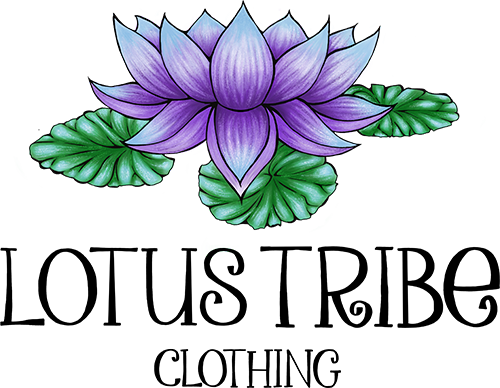Great teachers can teach the same things to many different audiences. Some so well in fact, that people often mistake what they taught as two different teachings; missing that the teaching was the same, just the words were different. Mama India, as some people call her, is one of the greatest teachers this world has ever known.

Kaivalya, Moksha, Liberation, Enlightenment; take your pick. These are all different ways to express the same thing. Yoga has its roots in India and it was originally a means to achieve liberation via self-knowledge. The 'Yoga' that most people are familiar with today is a modern retelling of this teaching. Some Yoga practices are more akin to Pilates and other forms of exercise and some have a more spiritual leaning. Today's Yoga comes from the path known as Raja Yoga, which follows The Eight Limbs of Yoga.
Thus far in this series on the Eight Limbs of Yoga, we have covered the grounds of Raja Yoga, The Eight Limbs of Yoga in general, and an in depth look at each of the limbs, which can be grouped into lifestyle/ethics, physical practices and yogic meditation. The point and fruit of all of these practices is known as Kaivalya and is what we will be discussing today.
Love, Liberation and the Ineffable

Love is one of those things that is hard to describe or put into words. Love transcends words, for the word is just a symbol that points to a feeling or state of being.
When we ask someone what love means, they will often try to describe what it is, but rather than telling us what it actually is, they typically describe how it feels instead. Based upon their description, we can assume that they have experienced it, and therefore 'know' what it is. At times, we might even say that they are "in love," which is a nice way to put it. It is something they are "in," it is a state that engrosses their entire being.

Kaivalya is similar to love, in that it cannot adequately be put into words. They are both transcendent and indescribable. Most importantly, they are self-validated. No one, but you, can truly know that you are in love and no one can truly know that you are enlightened, or have reached Moksha, Kaivalya or liberation. They might suspect that you are in love or have reached one of these states, because that is what they are- states of being, things you are in. As such, when one is in Kavalya, it transforms the individual, leading to an outward projection of their inner state.
The Seven Stages of Kaivalya

Like love, being easier to describe how its feels than to define it, the stages or qualities of Kaivalya were outlined. The first person to provide a commentary or explanation of the Yoga Sutras was the sage Krishna Dvaipayana (sometimes called simply Vyasa or Vedavyasa). He was a man who is said to have compiled the Vedas and written the Mahābhārata, as well as many sutras and Puranas. He describes the seven stages as:
- Stage 1: The realization that true knowledge comes from within and meditation will lead to this knowledge.
- Stage 2: Recognizing the causes of your suffering.
- Stage 3: Understanding of samādhi and the self.
- Stage 4: No longer needing to perform religious rituals, duties, etc.
- Stage 5: Control over the mind and mental processes.
- Stage 6: Freedom from the influence of external things.
- Stage 7: Merging with your true/higher self and achieving freedom or liberation.
So, What Is Kaivalya?

Even though we acknowledge the inability to describe Kaivalya in words, we will still try our best to describe it, based upon the texts. Kaivalya is often translated as "solitude," "detachment" or "aloneness/isolation."
Well, that does not sound like much fun or something to strive for now does it? Many people believe spiritual texts should be read figuratively and metaphorically and this is one of the issues with translating Eastern Wisdom into English for the Western world. They translate it literally, without proper explanation or understanding. Kind of like when people say that the Buddha said "life is suffering." That is not what he meant and Kaivalya is not a state of aloneness/isolation in that way. Although, solitude does seem apt.
As we mentioned in our last blog, some people put the Yoga Sutras within Samkhya philosophy. They would describe Kaivalya as the isolation or separation of Purusha and Prakriti (most simply put, matter and consciousness), but this is never actually said in the Yoga Sutras.

Kaivalya can be seen as Yogic liberation. Liberation in this case being the freedom or emancipation from Māyā (illusion or ignorance of the world and your true/higher self). This is also where the "detachment" bit comes in. It is detachment from Maya and isolation/solitude in your true/higher self- the self of everything. It sounds scary and like being alone, but it is actually about unity, togetherness and the oneness of all things. The last chapter of the Yoga sutras is The Kaivalya Pada and its general theme is exactly this, dissolving the small, egoistic self and knowing/feeling the unity of all things (they all reflect the same inner self, much like the image below).

Additionally, Kaivalya is a term that is much older than the Yoga Sutras themselves. It is a term borrowed from the Upanishads (the basis for all Hindu and Yogic philosophy). The Kaivalya Upanishad being a nondualistic, Shiva centric text. Within the Kaivalya Upanishad, it is stated that:
He who sees himself in all beings, and all beings in him, attains the highest Brahman not by any other means. -Kaivalya Upanishad 10
Brahman, the supreme Self of all, the great resting place of the universe, the subtlest of subtle, eternal, you yourself are it, and it's you! -Kaivalya Upanishad 16
This is because the microcosm (your egoistic self) and the macrocosm (the universe, God, whatever you prefer to call it) is seen as the same. Once you understand the self, you understand everything, for the self is the same as the universe and everything in it. It may have been best said by Rumi, "You are not a drop in the ocean; you are the entire ocean in a drop."

Final Thoughts
Yoga is all about freedom or liberation; one could even use the word "enlightenment," if one were so inclined. Enlightenment has become commoditized and sold to the masses as a cure all, resulting in its misunderstanding.
It seems that many people think being enlightened is about being super spiritual, perpetually blissful and never bothered by anything. The last part has some truth to it- people who have some level of spiritual development are much less shakable and less bothered by the everyday stresses and maladies of life. However, people often become less outwardly spiritual (stage 4 of Kaivalya), as it is a personal, inward journey that does not need to be and cannot be validated by anyone other than yourself. It also cannot be shared or adequately put into words, only felt and experienced.

Once achieved, people have bliss, just like they have sadness. The difference is, they are content. Bliss is an extreme emotion and perpetual bliss, without the lows, would no longer be blissful, it would become normal, base line, everyday experience. Striving for perpetual bliss is also an unrealistic expectation and leads to greater sorrow. Yoga teaches us to feel and experience everything fully; the highs, the lows and all the places between. The key is not being attached to these experiences or holding them longer than they are present. Enlightenment or liberation is not about being spiritual at all, it is about how you view, navigate and live your life.

